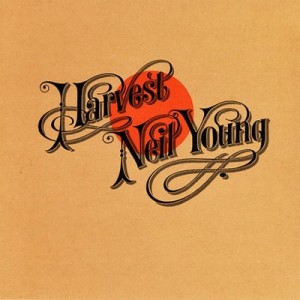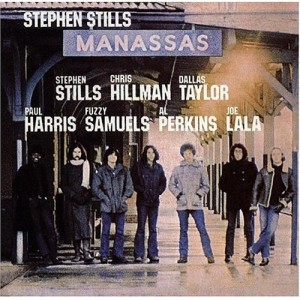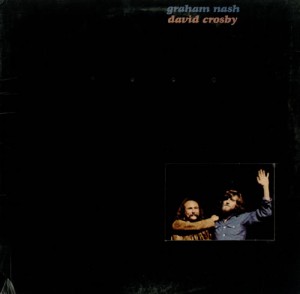Review: Neil Young – Harvest, Stephen Stills – Manassas, Nash/Crosby – Self Titled
Neil Young – Harvest (Warner Brothers MS-2032)
Stephen Stills – Manassas (Atlantic SD 2903)
Graham Nash/David Crosby – Graham Nash/David Crosby (Atlantic SD 7220)
It was the Christmas season of 1969 that the world received their first exposure to the music of Crosby, Stills and Nash . . . their sugary sweet harmonies and acoustical guitar work. Since then, the group has added Neil Young and the world has yet to satisfy their insatiable thirst appetite for their music.
Perhaps it is because of that tremendous demand the public has for their music that the albums listed above suffer. The artistic quality has become secondary to the speed with which the C,S,N & Y products are cranked out. The creative spark has been doused by the lack of earnestness . . . of motivation other than monetary.
So what are we left with after the release of two hugely anticipated albums, Neil Young’s Harvest and Graham Nash/David Crosby? A pair of sluggish, and in some moments downright embarrassing LPs . . . the latest on the C,S,N & Y assembly line.
At this moment, Neil Young is the biggest drawing name the music industry has to offer. I’m Happy That Y’all Came Down or Young Man’s Fancy, the bootlegs of Young’s February, 1971 Dorothy Chandler Pavilion concert sold more than half-a-million copies. That’s pretty damn amazing for a bootleg. And why? The albums were a very enjoyable product. A recording of an outstanding performance by a great talent. Assisted only by his own guitar or piano, Young whipped through some of his most popular tunes and revealed some new ones (four of which are on Harvest). Aside from the no-no’s involved with bootlegs, it was one of last year’s best albums.
Young’s music has fascinated me from the very beginning. The first time I heard “Broken Arrow” from Buffalo Springfield Again I suppose I instantly became an avid follower of his music. He is one of the few that have been able to capture the moods perfectly by uniting his guitar and distinctive unpolished voice.
With After the Goldrush, Young achieved the fame he now still holds. The general theme of despair was captured with such conviction of such songs as “Oh Lonesome Me,” “Don’t Let It Bring You Down” and “Tell Me Why.” The album was recorded in such of what resembled a homemade fashion that the rustic quality was heightened in every cut.
It took Neil Young about two years to follow-up After the Goldrush. That LP, Harvest, is quite a regression. In fact, it is nothing short of a stun to those that have had good reason to have faith in his tasteful musicianship.
With Harvest, the homemade quality has been unfortunately replaced by a slick production job. The conviction present in previous efforts is replaced by the mouthing of cliche lyrics by Young accompanied by the soggy background vocal work of James Taylor, Linda Ronstadt and others. Think I’ll pack it in and buy a pickup/ Take it down to LA/ Find a place to call my own and try to fix up/ Start a brand new day . . .
Young now has a new back-up band: The Stray Gators. Consisting of Jack Nitzsche on steel guitar among others. The band is sloppy and listless on most tracks. Drummer Ken Buttrey resembles the grade-school snare drummer who knows only one pattern. “Old Man,” “Heart of Gold,” “Out on the Weekend,” and “Alabama” all share the exact drum beat . . . thump, thump-thump.
On two cuts, Young abandons the Stray Gators and takes up with the London Philharmonic Orchestra. The result: “There’s a World” and “A Man Needs a Maid,” make no attempt to veil their pretentiousness.
Up till now, Young’s appeal lay in his irresistible simplicity. On “There’s a World,” his feeble vocal is inundated by an entire full piece professional orchestra. We are leaving. We are alone/ Come with us to all alone/ Never worry./ Never moan./ We will leave you all alone.
“A Man Needs a Maid,” apparently about his lover Carrie Snodgrass, is one of the most moving and effective lyrics available. First displayed on the bootleg,the number was brilliantly performed in a lonely piano arrangement to match the despair the lyrics generated. I must say that the church bells, gongs, french horns and a thousand strings don’t do much for the introverted vocal.
“Alabama” is introduced by the same sawing lead guitar work that introduced “Ohio.” The theme returns to cash in on “Southern Man.” However, unlike “Southern Man” the instrumentation is cluttered by the, you guessed it, Stray Gators. Steel guitar going in one direction, rhythm guitar going in another and the vocal off in yet another direction don’t seem to lend much to the continuity of the melody.
Neil Young suffers a blow every time he is over-produced. He is best presented in a gentle, unpretentious manner. This is the reason that, “The Needle and the Damage Done” stands out so distinctly from the remainder of the album. Recorded live, the track features only an acoustic guitar. It is so much easier to realize Harvest‘s shortcomings when it is placed in the face of a cut such as this. The planned stupor of the Stray Gators adds nothing, the impressive name-dropping of an unnecessary James Taylor does little more. But Neil Young . . . accompanied only by a small number of authentically basic musicians to fill him out a bit . . . is the music anybody could offer.
Up till this album, the vocal and musical harmony of Graham Nash and David Crosby have been united only within the confines of the collective and separate recordings of C,S,N & Y.
It seems odd that Graham Nash/David Crosby exists, as the LP is actually half Nash’s material and half Crosby’s material, i.e, it’s one half of a Crosby solo LP and one half a Nash solo LP. If it sounds awkward, it is.
Graham Nash is the worse off for the juxtaposition. His predictable material is pleasant, bouncy and enjoyable in small doses. In larger measures, Songs for Beginners and this album, one begins to realize all too quickly how repetitious his music really is. “Southbound Train” is just a slightly altered “Frozen Smile.” “Immigration Man” represents the “Chicago” mood of Nash. The theme is the same, as is the arrangement.
Again, both artists dominate their songs, in most occasions, Crosby can be barely made out in Nash’s material and vice-versa.
David Crosby deserves another entire album of his own material. If I Could Only Remember My Name deserves a brilliant follow-up to match its own quality. And if what is presented by Crosby on this album is an indication of what is to come . . . Crosby may yet turn out to be the most gifted of the entire C,S,N & Y gang.
Only five of the record’s tracks belong to him, and the result is frustrating that more of them simply aren’t available outside of the previously mentioned solo LP. “Whole Cloth” is one of those mystically misty (?) tunes that Crosby performs so well. The musicianship is hesitant much of the same as “Triad,” the vocal a type of earthy whisper.
“Page 43” follows a great chord structure with an after-effect to it resembling an all-day thumbsucker. Hear it once and you’ll hear it the rest of the day. It’s just one of those songs that finds its way into your blood. Now after a hype like that can it be anything else but great? I could go on for days.
There has always been a place in Crosby’s heart for a good rich harmony consisting of do-do-da-da-doot-da-da type stuff. Recall the code to “Suite Judy Blue Eyes.” With “Where Will I Be,” he lyrically raises the infinite question and follows it with some soaring harmony work with Nash that ranks with the best of that particular genre.
Well, what’s it all led to? Nothing too complex. The fact is that when somebody finds an untapped market they’re bound to cash in on it. David Crosby, Graham Nash and Neil Young have discovered a ripe market, Harvest and Graham Nash/David Crosby are a couple of attempts to cash in. And they’ll succeed. Watcha Gonna Do?
Moving right along, we have the latest from Stephen Stills, Manassas. A two-album set, the recording seems to prove that Stills needs a band around him to stifle his self-indulgent leanings.
This time he has surrounded himself with some of the best in the business – Chris Hillman, Al Perkins, Joe Lala, Paul Harris, Fuzzy Samuels, and the ever-constant Dallas Taylor.
Although a certain amount of throw-away is always present in any double-LP set, Manassas always remains admirable if not exciting. The musicianship is generally excellent with the only pitfall being that the droning Stills’ vocal pervades all but one of the LP’s sixteen cuts.
The lyrics represent a low-point in Stills’ lyricist career. Far be it from me to mention that the days of “Suite Judy Blue Eyes” style lyrics are far behind. The bulk of the lyrics concern the trials and tribulations of Stephen Stills . . . as if we all waited breathlessly to hear Stills’ newest triumphs and mostly frustrations that he has suffered between albums.
The album set is divided under four subtitles: The Raven, The Wilderness, Consider and Rock & Roll is Here to Stay.
The Raven side is the electric side; The Wilderness side the ‘Merle Haggard’ side, The Consider side, the closest to the material he presented with the Buffalo Springfield that Stills has come in quite a while, is the album’s high point. The Rock & Roll is Here to Say side is rather hypocritical. Easily interchangeable with side one, it is basically another electric side.
So there you have it, living proof that although the splinters are sometimes enjoyable, they never equal the bulk from which they came. In this case, we’ll let the bulk be represented by C,S,N & Y’s Deja Vu and the splinters Harvest, Manassas and Graham Nash/David Crosby.
Courtesy of the Door (aka San Diego Door) – Cameron Crowe – June 8, 1972 – June 22, 1972




